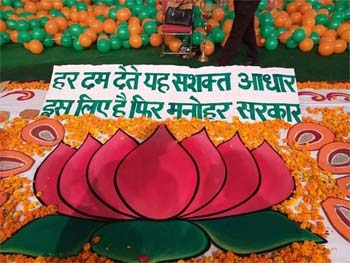INVC,,
Delhi,,
The Vice Chairman National Disaster Management Authority, Gen N. C. Vij released the ‘National Disaster Management Guidelines – Management of Drought’ compiled by the National Disaster Management Authority (NDMA), here today. Speaking on the occasion he emphasized that drought is not merely a physical phenomenon characterised by conditions of soil, water and vegetation. It has a very deep implication on the social life and behaviour pattern of rural people.
The Guidelines for the Management of Drought have been formulated after a ‘nine step’ process fully taking on board various Central Ministries and Departments and the States. The process also included wide consultations with scientific and technical institutions, academics, technocrats and humanitarian organizations. The draft guidelines documents were circulated to all the Ministries/Departments at the Centre and the States for their feedback. All workable suggestions have been incorporated.
The Guidelines on management of drought describe in brief the phenomenon of drought, the efforts made so far to control them by diverse organizations and institutions and make several important and far-reaching recommendations on the measures to be taken by the Central and the State Governments and other selected agencies. Based on the guidelines, the State/UT governments will prepare their drought management plans, implementation of which are expected to minimize drought hazards.
NDMA in its guidelines has identified many current challenges in drought management including; 1) criteria followed for drought declaration and the time when the drought is declared differs across the states;2) indicators used and the methodology followed for drought intensity assessment and drought monitoring differ largely from state to state; 3)data sharing for drought assessment and drought declaration; 4) insufficient use of Information and Communication Technology (ICT) tools by various agencies in management of drought; 5) Lack of check dams in the rainfed areas results in inadequate storage-water in times of need or drought; 6) Lack of community participation in drought management activities at the village/tehsil level, and the low levels of involvement of Self Help Groups, NGOs and the corporate sector.
At the national level, there has been a paradigm shift, from the erstwhile relief-centric response to a proactive prevention, mitigation and preparedness-driven approach. These efforts are expected to conserve developmental gains and also minimize losses of life, livelihoods and property.
India is extremely vulnerable to natural disasters such as floods, drought, cyclones, earthquakes, landslides etc. The traditional approach to drought as a phenomenon of arid and semi-arid areas is changing in India too. Now, even regions with high rainfall, often face severe water scarcities. Frequent disasters have been retarding our painstaking developmental efforts and our quest for progress, especially for the poor and vulnerable sections. Concerned with the increasing frequency and magnitude of Natural Disasters, the GoI piloted the passage of the Disaster Management Act, 2005 under which NDMA was created at the National level headed by the Prime Minister and similar authorities at the State and district levels.
Dr. Mohan Kanda, Member NDMA highlighted the main aspects of the Guidelines on Management of Drought and underlined the importance of the subject of drought and climate change for sustainable agriculture. The function was attended by Members of NDMA, Secretary NDMA – Shri A.B.Prasad and other officials.

















extended almanac you include